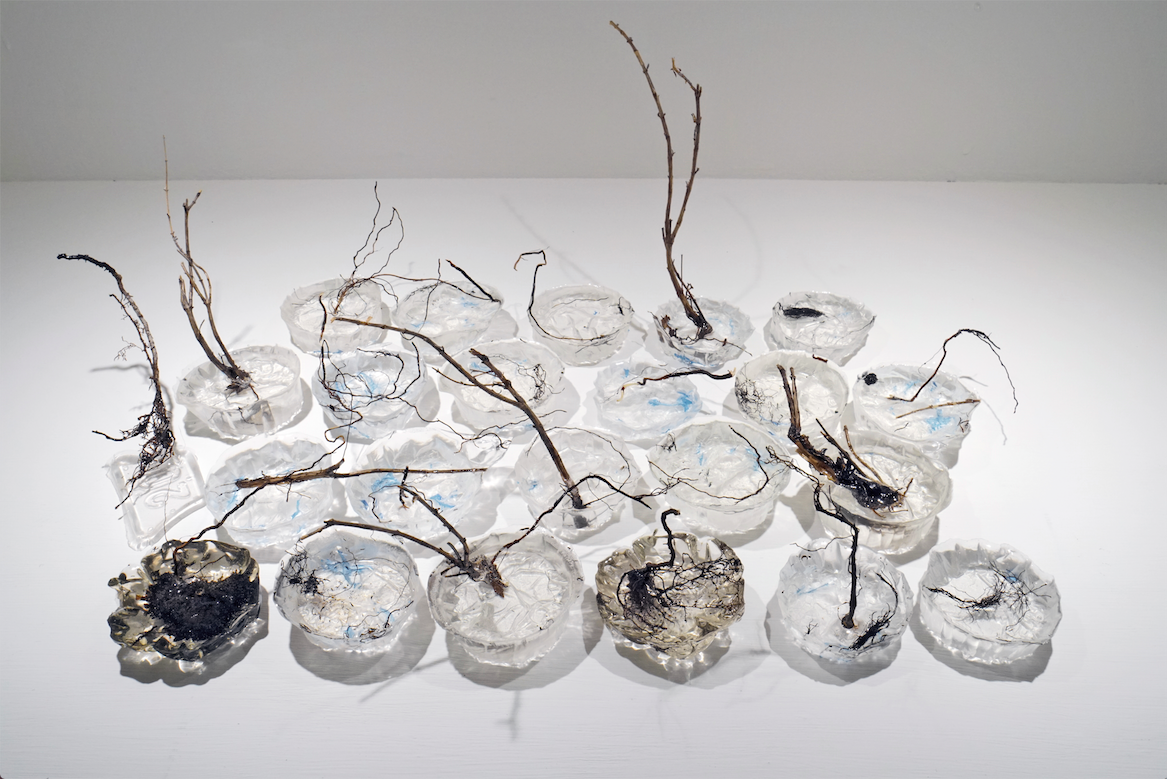GIULIA PARDINI
Francesca and Vera, you were invited to a residence in the city of Novi Sad by the Serbian partner Novo Kulturno Naseleje as part of the Magic Carpets platform. What was your first impression of Serbia? Tell us what your experience of this journey was like.
GROSSI MAGLIONI
In Serbia, we found very rich imagery, different from ours, with epic stories and mythologies often having to do with war and sacrifice, and an art historical scene related to interest- ing performances which we knew very little about. We were immediately enthralled by Novi Sad’s urban landscape, which shows traces of the conflict and a community that has developed around unique rules of coexistence. The appropriation of public space seems to be happening slowly and the green hills that hide the many atomic shelters are silently part of the territory and common areas between residential buildings. For us, this was a chance to explore the need to look for a dialogue existing between citizens and the landscape and to elaborate on some traumatic aspects of recent history.
GP
Can you tell us about the project you worked on during the residence called Occupazioni: Il Dialogo Perenne (The Perpetual Dialogue)?
GM
Occupazioni is a project we started in 2015. It revolved around an installation made of ropes and curtains which
had been modified many times. With the help of the public, through workshops and roundtable discussions, we explored the body’s ability to occupy space and live in a community. Starting from the scenarios that arose in the installation, we wrote a story of a child that grows until the moment he/she meets other people to build a new village with. The final chapter of Occupazioni, in Serbia, took place under a tent that we called Tenda del Dialogo Perenne (Tent of The Perpetual Dialogue), installed in a public space in the neighbourhood of Novo Naseleje in Novi Sad. We worked on rewriting the story with people from the area, in a sort of staging of the narration in its making. With a series of meeting-assemblies, we discussed themes like: the figure of the mother/beast, the creation of the landscape through a “magic body” and memory/the atomic shelter.
GP
Building a village, with carpets and curtains, inviting the public to take part, involves a willingness to discuss and an invitation to dialogue. How do you deal with these two elements in your artistic practice and in this work in particular? How was the work with the Novi Sad community carried out?
GM
We work in a duo, and this has naturally affected all of our works. Dialogue is necessarily at the base of the work,
and this aspect has been coming out more and more over the years. From the beginning, with the performances, we sought out forms of interaction with the public, to overcome the frontal nature of the theatre and any ambiguity and reference to it. We wanted to get feedback, responses from the public that would determine the work’s progress. With the passing of time, this quest for dialogue has been increasingly aimed at the definition of meanings and the construction of imageries, like we tried to do in Novi Sad. Our attention is on dialogue, in its making, on imageries and meanings that are not crystallised, that change and become history. So Occupazioni: il Dialogo Perenne is linked to the idea that com- munity, as such, exists as a process.
GP
You are artists and mothers. In this large project, one can also sense a strong interest towards women, as the cornerstone of society: can you tell us about the mother figure within this project?
GM
In 2015, we worked on the first tent for Occupazioni at a residence where we brought Francesca’s first child with us, at just 3 months old. On that occasion, we felt the need to build a caring tent that could welcome and
celebrate this birth. It was the first time we shared this aspect of our lives at work. We are exploring the prospect of being artists and mothers in an art system and society that excludes, confines and marginalises them at work, as if this experience takes something away instead of adding something. We have to struggle with ourselves as well to not cede to this thought. At the same time, we are forced into an imagery that refutes the most fearsome and bestial aspects of women and mothers. Aspects we wanted to explore as social functions of mediation with the other, in this case expressed in the relationship with one’s own child.
Giulia Pardini is Magic Carpets‘ Emerging Curator on behalf of Latitudo s.r.l.

